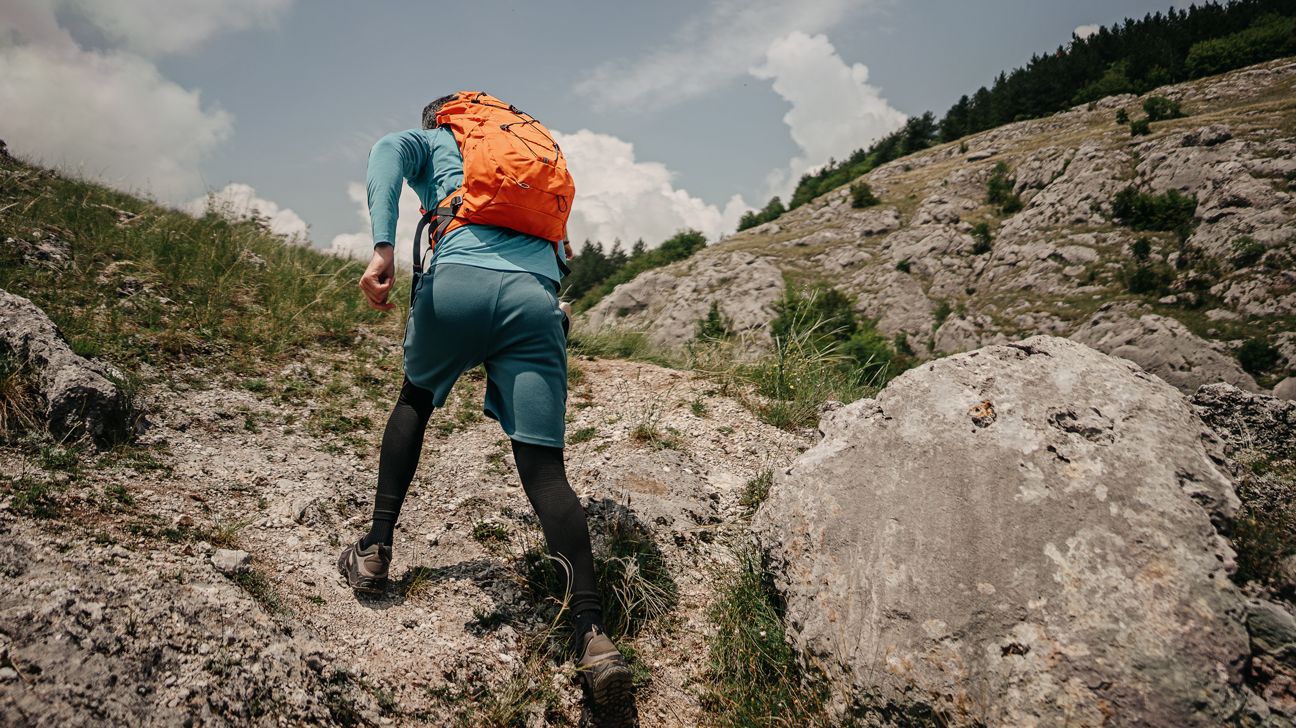Wondering if rucking can be as effective as weightlifting? Spoiler alert: it definitely can!
Weightlifting isn’t the only way to build muscle. Rucking, or walking with a weighted backpack, is also highly effective. It’s easy to start, can be done anywhere, and helps build muscle, burn fat, and boost endurance.
Curious? Keep reading to discover why rucking might become your new favorite workout!

Rucking is like taking your regular walk and cranking up the intensity with heavy cargo. It’s as simple as strapping on a weighted backpack (aka rucksack) and hitting the pavement, the trail, or wherever you like to roam. Originally dreamed up by the military to toughen up soldiers, rucking, or a rucksack march has, er, marched into civilian life as a killer workout.
What makes it awesome? The extra weight transforms a casual stroll into a workout that means business. Plus, it’s customizable — you can load up as much or as little weight as you want, making it perfect for any fitness level. And the best part is that you can ruck just about anywhere.
Rucking isn’t just a walk in the park — it’s a powerful workout that packs a punch in all the right places. Here’s why rucking deserves a spot in your fitness routine:
Builds strength and endurance
Think of rucking as the ultimate multitasker for your body. It’s like lifting weights but with cardio to keep your heart pumping.
As you lug that weighted backpack around, your legs, back, and core are putting in serious work, building strength, and endurance with every (weighted) step.
Burns calories and promotes weight loss
Want to torch calories without the treadmill monotony? Rucking’s got you covered. The extra weight and steady movement combo turns your stroll into a calorie-burning machine. Perfect for shedding any additional pounds while keeping things interesting.
Improves posture and core stability
Carrying a weighted backpack helps your posture. Your core has to stay engaged to keep you balanced, which helps align your body and ward off injury.
If you’ve had a baby, rucking can be a game-changer, helping combat the postural shifts of pregnancy and hauling around kids. Plus, it builds the functional strength you need for everyday life, like lifting groceries or wrangling toddlers.
Accessible and time-efficient
Rucking easily fits into a busy schedule. You don’t need special equipment beyond a sturdy backpack or a gym membership, and you can do it while multitasking — think walking the dog in the morning or pushing a stroller. Plus, the whole family can join in, making it a great way to combine fitness with family time.
Starting rucking is easy, but here are some tips to help you get the most out of your rucks:
- Start light. Begin with a challenging but manageable weight, around 10 to 15% of your body weight.
- Choose the right backpack. A comfortable, sturdy bag with padded straps is essential to avoid strain and injury.
- Focus on form. Keep your shoulders back, engage your core, and maintain a steady pace.
- Increase gradually. As your strength and endurance improve, gradually increase the weight and distance.
- Stay consistent. Regular rucking sessions will help you build strength and endurance over time.
Rucking is generally safe, but here’s how to stay injury-free:
- Listen to your body. Lighten your load or take a break if you feel pain or discomfort.
- Warm up and cool down. Prepare your muscles for the workout and help them recover afterward.
- Stay hydrated. Carry water with you, especially on longer rucks.
- Wear supportive footwear. Good shoes can prevent foot and ankle injuries.
- Be mindful of your surroundings. Pay attention to the terrain, and avoid areas that could be hazardous.
Does rucking build muscle?
Yes, rucking can help build muscle, especially in your legs, core, and back. The added weight provides resistance, similar to strength training.
What is the ideal weight for rucking?
Start with 10 to 15% of your body weight and adjust based on your comfort and fitness level. Heavier weights can affect your balance and stance, making injuries more likely. As you progress, you can gradually increase the weight.
Does rucking build traps?
Yes. Rucking forces your upper back and shoulder muscles to step up, giving your traps a solid workout as you carry the weight.
Is rucking good for you?
Ruck yes! Rucking is a low-impact, full-body workout that kicks butt.
Tell your boring walk on the treadmill to ruck off and trade it in for a waltz about with a weighted rucksack. Rucking could be the secret sauce your fitness routine has been missing, helping you build muscle, shed pounds, or get those steps in.

